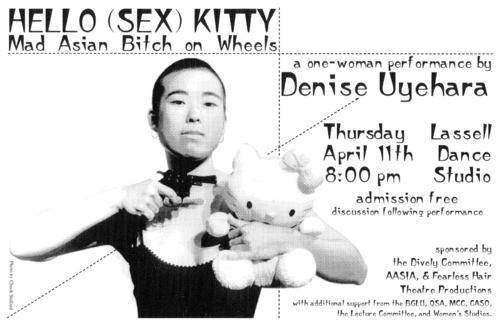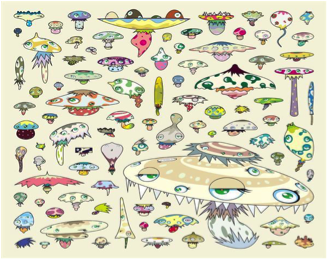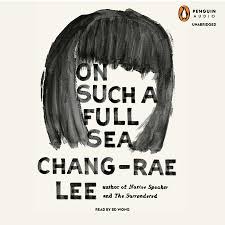What does the prominence of cuteness as an aesthetic category amid US-Chinese codependency and rivalry tell us about the global population’s attachments and desires? Under what circumstances do cute objects become facilitators of the cruel optimism that structures the relation between a slowly dying population and its toxic world; and, on the contrary, when do these same objects become items of fantasy that sustain a population’s dreams of liberation? These questions are at the center of Chang-rae Lee’s On Such a Full Sea. Lee’s novel configures in a science fictional world the aesthetic category of cuteness;1Sianne Ngai terms aesthetic categories as cross-genre analytics that reflect how the concept of aesthetics has been transformed by late capitalism characterized by “information-saturation,” “hyper-commodification,” and “performance.” This transformation fundamentally de-centers the aesthetic experience from pure reception to the triad of consumption, circulation, and creation. See “Our Aesthetic Categories.” the novel is told from the perspective of an “Asian-inflected” collective narrator comprised of the people from “B-Mor.” Lee’s dystopia is a globalized, neoliberal world, where borders are open and bodies are mobile and susceptible to the whims of capital and its degradation of the natural environment. The dystopian world of the novel is organized into three strata: charters, facilities, and open countries—communities demarcated for the top 1%, the working class, and the outcasts, respectively. Though speculative in nature, the working-class life of the collective narrator in the “facility” town of B-Mor mirrors present-day reality, reflecting the global laboring class’s working conditions in “factory towns outside of Shenzhen”—a Chinese manufacturing town Chang-rae Lee visited during research for the novel. Cuteness may appear to be a far-fetched hermeneutic for understanding the global working class’s responses to entrapment by capital and hazardous working conditions. But, if we pay close attention to the small details and self-fulfilling fantasies projected onto Fan by the working-class collective “We” that narrates Lee’s novel, we can see how “cuteness” diagnoses the material and psychological needs of laborers indentured to sustain the demands of global consumerism.
On Such a Full Sea offers a dark vision of a Global Asia, with Asia flattened out from a continent of heterogeneous locales into a broad concept that signifies disenfranchised socio-economic populations and their cultures. Cuteness sheds light on Lee’s critique of the neoliberal system that has already produced a version of this dystopic Global Asian reality, laying out two possible outcomes: cuteness might intensify existing alienation, or, it might arouse a movement in a population facing extinction.
According to Sianne Ngai in “Cuteness of the Avant-Garde,” toying with cute objects that are simple in design, flat in affect, and rounded in contours “endows” the beholder “with agency” in an “over-administrated world” (834-7). Ngai’s formulation of cuteness as a visual, tactile, and linguistic configuration further links the world of Lee’s novel to our own, where grinding productivity is the dominant value, resulting in profound alienation of the working class.
To understand how cuteness becomes radicalized in the global Asia of Chang’s novel, we must first re-visit cuteness’s origins in Japan. In Pink Globalization, Christine Reiko Yano approaches cute aesthetics through Hello Kitty. Yano asserts that Sanrio’s Hello Kitty arose to global popularity in the 2000s, when the West’s demand for commodified Asian cultures was met by the Japanese nation-state’s desire to assert soft power. Such nationalist desires were not received well by Asian artists who had been working to resist the orientalizing of Asian peoples and cultures. For instance, according to the Japanese Australian performance artist Yumi Umiumare, Hello Kitty is creepy because it “has no mouth, only three dots on the face, and doesn’t look like it’s smiling” (168). Even more explicitly, the Asian/American playwright Denise Uyehara points a gun at a stuffed Hello Kitty doll in her promotional poster of Hello (Sex) Kitty: Mad Asian Bitch on Wheels.

Anger towards the mouthless kitty evidences the violent response that vulnerable cute objects are capable of soliciting from their perceivers. Umuimare’s and Uyehara’s responses to cuteness reflect their affinity with the avant-garde school in Japan. The superflat movement of the avant-garde brings the vulnerability and aggression in cuteness to the visual foreground. Pictures like Army of Mushrooms by the artist Takashi Murakani represent this more complicated version of cuteness. Sixty (if not more) animated monster mushrooms are crowded onto the picture’s visual plain, creating a claustrophobic effect. These mushrooms are deformed: one of them has one eye; others have three; while the biggest mushroom has more than ten identifiable eyes. While these mushrooms look alarming, their rounded eyes render them cute, as if they are begging for mercy and love.

According to scholarship on the superflat school, the cute aesthetic is the artists’ discursive tool to express Japan’s post-war abjection, particularly the Japanese’s diminishing sense of global dominance after the atomic bombing of Hiroshima and Nagasaki. The feral element in the cuteness of the avant-garde expresses defiance, protesting the opportunistic type of cuteness championed by pink globalism and upsetting orientalist expectation for an Asian cuteness that is blunted and ready to be domesticated.
On Such A Full Sea’s Fan embodies this edgier version of cuteness. Similar to the way that cuteness in the superflat school indexes abjection, B-Mor’s attachment to Fan’s cuteness indicates the B-Morians’ powerlessness under a global stratification that, according to Lee, has produced an “unsavory bunch of neuroses and psychoses.” And B-Mor’s plight is quite bleak; the B-Morian have been contaminated by malignant cancerous cells and the town’s economy is at risk of collapse. Creating, consuming, and circulating the images of their cute leader Fan becomes the public’s way of coping with this apocalyptic development. B-Mor’s attachment to Fan seems to be telling us that there is something special about cuteness that goes beyond its base commercial power.
To the B-Morians, Fan is “the thing, just 150 centimeters tall” (4). She has a “formless face” (64), and at the age of “sixteen” she “had the stature of a girl of eleven or twelve” (4). The novel’s evocation of cuteness may seem coincidental, but the cover of the monograph—featuring Fan’s silhouette—further suggests the novel’s awareness of its cute dimension. Though Fan’s face on the cover is nullified by the monograph’s title, her recognizable bob haircut illustrates roundedness and simple contours, two key features in Ngai’s formulation of cuteness as an aesthetic category (814).
But why is a cute girl central to the psychic sustenance of a post-apocalyptic city teetering on the edge of collapse? We may begin to locate an answer in the mural painted by the “cutesy” and “saccharine” Barbie girls (242), who are held captive together with Fan in the Charter village of Seneca. After Fan escapes from the grip of Miss Cathy, the remaining girls begin drawing a billboard-sized portrait of a girl whose “curtaining sway of hair” (295) resembles that of Fan, but that at the same time carries “distinctive notations of each of them” (295). When reading cuteness as an aesthetic form that is a proxy by which producers and consumers work through their psychic needs, the girls’ drawings and appreciations of Fan’s image, whose petite physique reminds them of their own, actually maintains their optimism that they will escape from Miss Cathy.
Cuteness, as the novel elaborates, is equally crucial in sustaining full-sized adults’ optimism. This becomes apparent when the collective narrator notes that “guerilla-painting” of Fan’s images “under cover of the night” across town “has becom[e] more and more a part of everyday life” (63). The B-Morians’ deification of Fan turns her tiny figure into a tabula rasa onto which residents project their desire to flee from the vast quagmire that is the present. By structuring such a relation between Fan–the cute object–and the B-Mor public,who produce and consume images and stories of the cute object, On Such a Full Sea opens up a new way to reassess cuteness as an aesthetic form that creates in the beholder the feeling of being-in-control at moments when their autonomy over themselves wanes.
Fan’s images instigate an imminent political upheaval because of the subjunctive sense of agency that the diminutive fantasy bestows onto the public. The creation, production, and consumption of cuteness serve as ways for B-Morians to conduct small acts of resistance against the vast global forces that have hemmed them in and damaged their environment. The relevant question for us, readers who live outside of the science fictional world, is: how can we reclaim cuteness from the grip of capitalism for self-empowering purposes? On Such a Full Sea’s suggestion is to disembed cuteness from its corporatist, commercial Hello Kitty-like iterations. Tracing the materials and stories of the cute in Lee’s framework of a Global Asia, where Asia becomes the signifier for the class and culture of the globally disenfranchised, offers a surprising reading of cuteness: one that points to its potential as a means of activating a people-centered globality.


